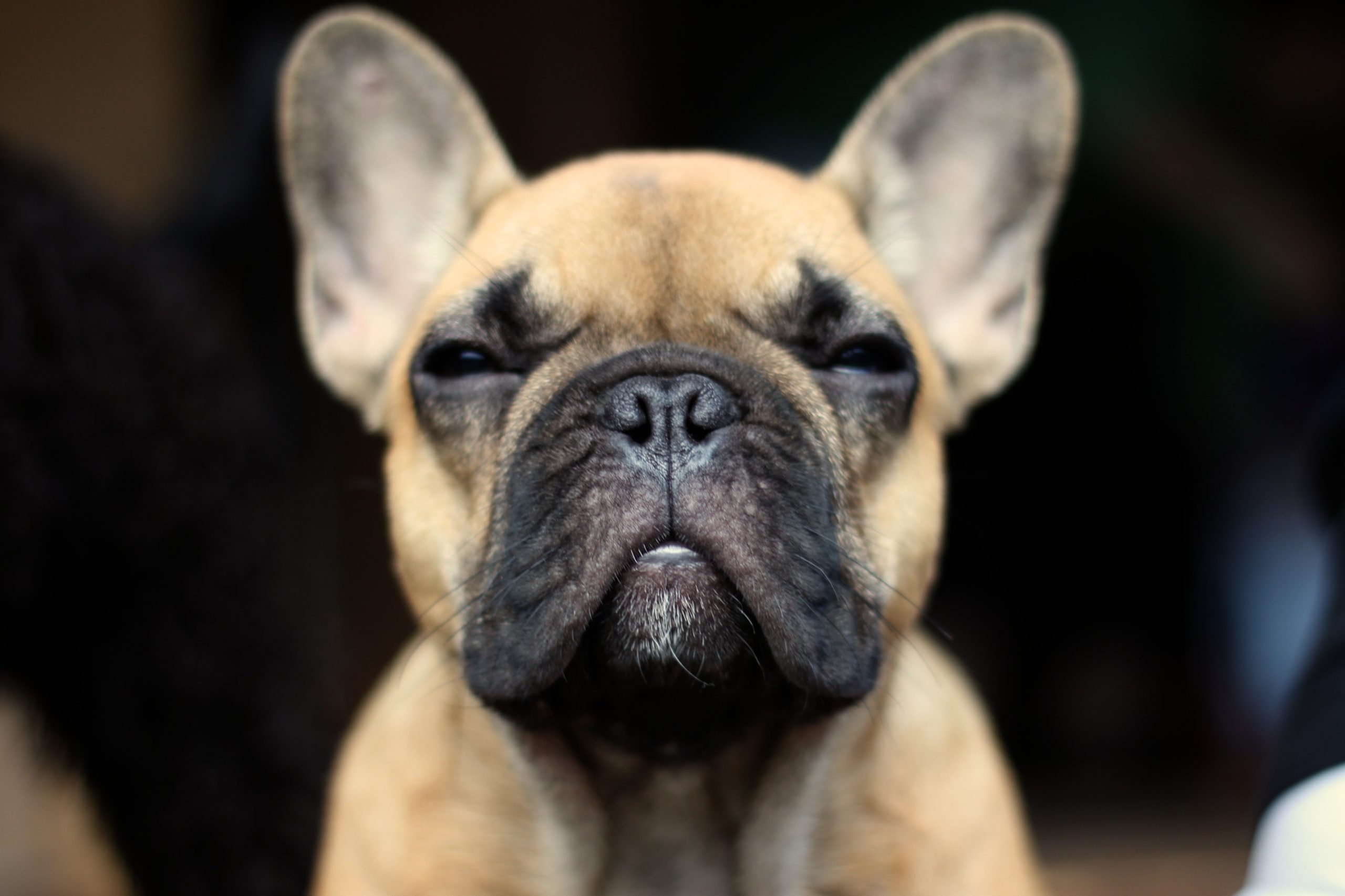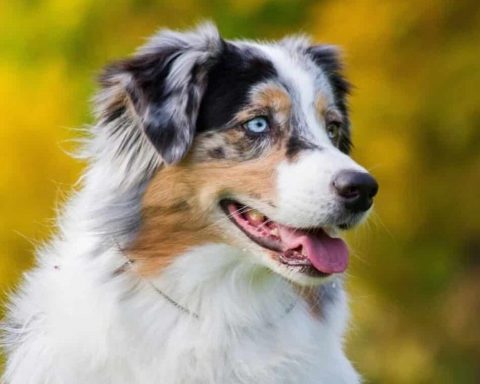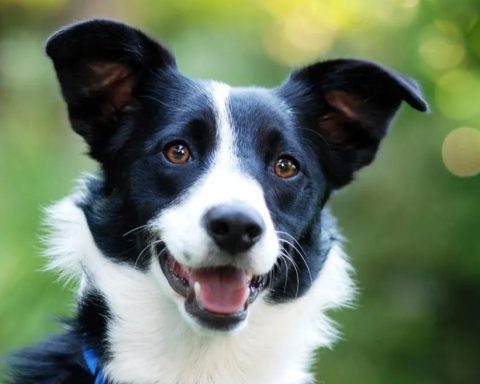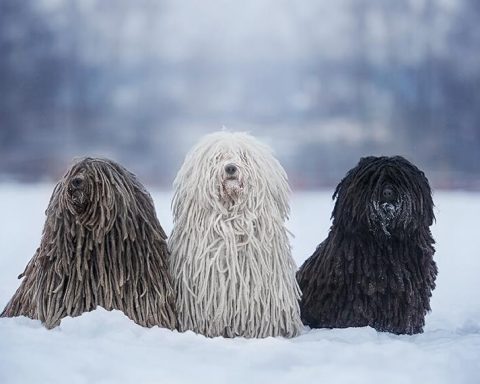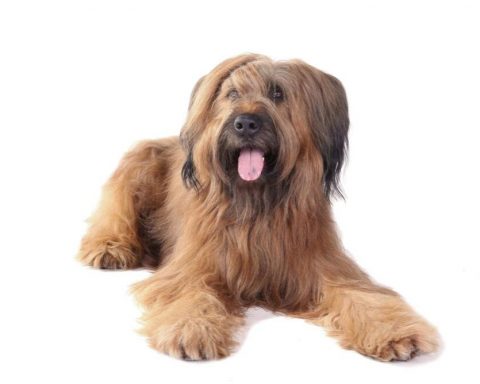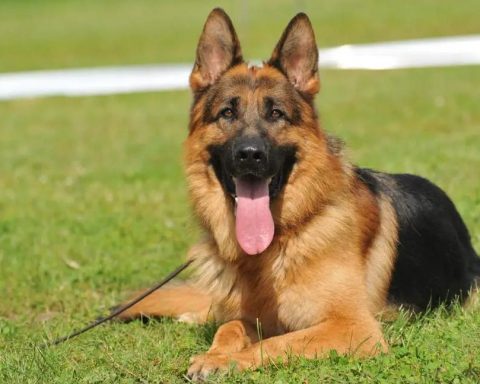Synopsis.
The perfect English Bulldog must be a medium-sized dog with a smooth coat; possessing a heavy, plump, low and wobbly body with a short face, thick head, broad shoulder blades and strong limbs. Overall appearance and posture show very solid, energetic and full of strength. The character appears calm and amiable, firm and courageous (without appearing malicious or belligerent), and his manners appear calm and dignified. These qualities are reflected in his expression and demeanor.
Origin: England
Body Type
Size: Mature males weigh about 50 pounds; mature females weigh about 40 pounds. Proportion: Head circumference (the circumference of the area in front of the ears) is proportional to the height of the highest point of the shoulder blades. Proportionality: The “focus” is fairly spread out, with each part being very well proportioned in relation to the others, and no one part standing out so prominently while the others are noticeably underrepresented as to make the appearance ugly or disproportionate. Influence of gender: In contrast to the different genders, it is permissible to be more tolerant of females, so that the requirements for females are not as strict as those for males, nor are they required to be as robust as males.
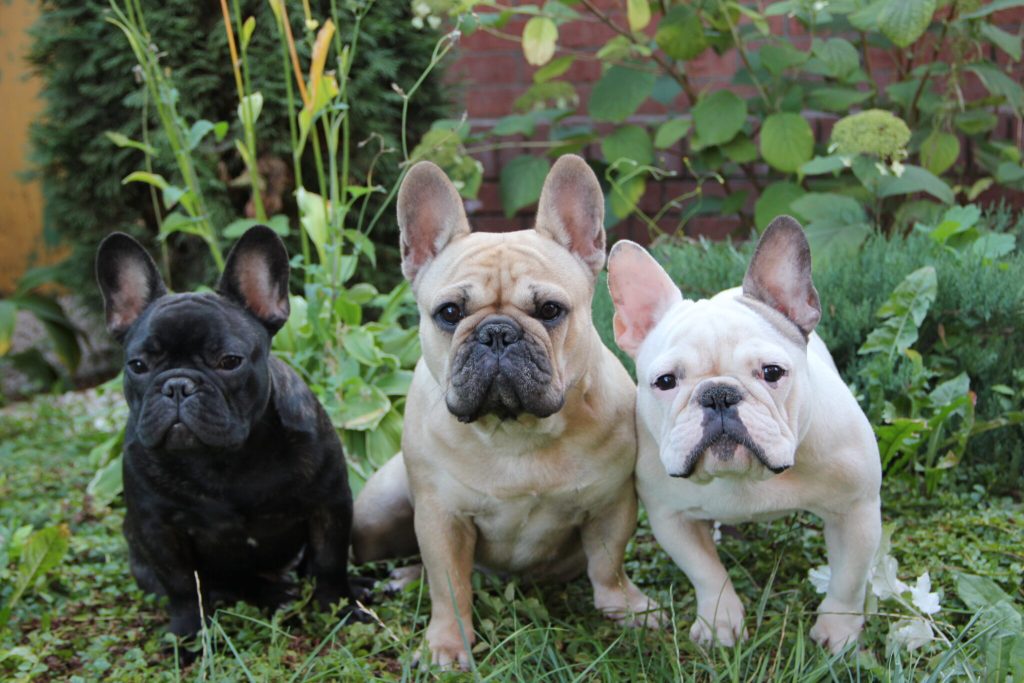
Head
Eyes and eyelids: The eyes, viewed from the front, are situated relatively low on the head, as far away from the ears as possible, and the line between the corners of the eyes is at right angles to the stop. Directly in front of the head, the distance between them is as wide as possible, and the outer corners of the eyes, when viewed from the front, lie within the contour of the cheeks. The eyes are rather round in shape, of medium size, neither sunken nor prominent, and very dark in color. When he looks forward, the eyelids completely cover the whites of the eyes, and the “instantaneous membranes” are not visible at all. Ears: The ears are quite high up on the head, the inner edge of the front of the ears being connected with the contour line of the head, and situated at the back corner of the top of the head so that they are quite far apart, and situated as high up as possible, as far away from the eyes as possible. The ears are rather small and thin. The shape is that of the so-called “rose ears”. A rose ear is one in which the lower edge of the back is folded inward and the upper edge of the front goes over (outward and backward), with part of the inner ear and edge showing (the ear should never be a standing ear, button ear, or cropped ear). HEAD: The head is very large, with the circumference of the head (in front of the ears), at least as high as the height of the shoulders. When viewed from the front, the distance from the lowest corner of the jaw to the apex of the head is quite long and quite wide and square. When viewed from the side, the head is fairly high and the distance from the noggin to the posterior occipital bone is fairly short. The forehead is fairly flat (neither rounded nor arched), and the face is neither prominent nor drooping. Cheeks: The cheeks are fairly rounded and protrude to the sides beyond the eyes. Stop: The temple and forehead bones are very well defined, wide, square and high, forming an indentation between the eyes. This indentation, or stop, is wide and deep and extends to the middle of the forehead, starting at the top of the head and distinguishing the head in a vertical direction. FACE AND MOUTH: The face, beginning in front of the cheek bones and ending at the tip of the nose, is an extremely short distance; the muzzle is very short, broad, turned upward, and very deep from the corner of the eye to the corner of the mouth. NOSE GLASSES: Large, broad, black, with the tip of the nose leaning back, deeply situated between the eyes. The distance from the base of the stop (between the eyes) to the tip of the nose is as short as possible, not exceeding the distance from the tip of the nose to the edge of the lower lip. The nostrils are wide, large, black, and have a clear center line. Nostrils that are not black are bad; gray or liver-colored nostrils are out of order. Lips: The upper lip is thick, broad, pendulous, and very deep, hanging completely over the sides of the jaw. In the front it combines with the lower lip and almost covers the teeth. When the mouth is closed, the teeth are essentially invisible. Bite and -Jaw: The jaws are thick, very wide, square, and “protruding in the lower jaw,” with the lower jaw quite prominent in front (more so than the upper jaw) and turned upward. TEETH: Teeth large, strong, canines quite wide apart, six small teeth between canines in front, arranged flat and horizontal.
Neck, Backline, Body
Neck: Neck short and very thick, back of neck deep, firm and arched. Dorsal line: slightly collapsed behind the scapulae, immediately after the scapulae (the lowest part), as the spine rises towards the loin (the highest point of the loin is slightly higher than the highest point of the scapulae), it bends again towards the tail, thus forming an arch (a very distinctive feature of the breed), which becomes the “arched back”, or, more accurately, the or more accurately, the “whorled back”. Body: The chest and body appear very wide, with full flanks, rounded ribs, and very deep from the scapulae to the lowest part (where they meet the chest). The bottom of the chest is then between the shoulder blades and the forelegs and is very low, giving him a very wide, short, short-legged appearance. Chest: The chest is very broad, deep, and full. Lower abdominal line : The body is lifted up in the abdomen after the supporting parts of the ribs and is not very round. Back and loin: the back is short and firm, very broad at the shoulder blades and slightly narrow at the loin. Tail: Straight or “spiraled” (but not curved or curled), in either case it must be short, low-slung, with a firm downward posture, thick at the root and thin at the tip. If the tail is straight, it is rounded and has a uniform taper. If it is “spiraled”, the curvature of the kink is very well defined and may appear stiff, and the kink is flat, with no part of it rising above the root of the tail.
Forequarters
Scapulae: The scapulae are well muscled, very heavy, broadly distributed and outwardly sloping, giving the impression of stability and great strength. Forelimbs: the legs are short, strong, straight, and well muscled, very widely spread, with very well developed fibulae showing a bowed appearance, but the leg bones should not be bent or crossed, and the foot claws should not be positioned too close together. Elbows: The elbows are low and outward facing and appear to be loose in relation to the body. FOOT CLAWS: Foot claws are medium sized, compact and firm. The toes are compact, split at the upper part, the toe joints are high, and the toenails are short and thick. The forefoot claws are straight, or slightly turned outward.
Hindquarters
Legs: The hind legs are firm and muscular, slightly longer than the forelegs, bringing the loins above the scapulae. The fly joints are slightly curved and positioned so low that there is sufficient length and strength from the loin to the fly joints. The lower hind legs are short, straight and strong, with the knees slightly bent outwards and slightly away from the body. Thus the fly joints are close to each other and the hind foot claws are turned outward. Foot claws: The foot claws are medium sized, compact and firm. The toes are compact, split in the upper part, the toe joints are high, and the toenails are short and thick. The hind paws are turned outward.
Coat and Skin
Coat: The coat is straight, short, flat, dense, and of fine texture, smooth and shiny (no bangs, feathered trim or curls). Skin: The skin appears soft and loose, especially on the head, neck and décolletage. Wrinkles and Flab: The head and face are covered with heavy wrinkles, and at the throat, from the jaw to the chest, there are two layers of loose, sagging folds that form flab.
Color
The color of the coat should be balanced, type pure and shiny. The preferred colors for this breed are the following: (1) Red tiger spots. (2) Other color tiger spots. (3) Pure white. (4) Pure red, camel or light brown. (5) Spotted colors. (6) Colors previously described, but of poor quality. NOTE: A correct splash color is preferable to a tarnished tiger spot color or a defective solid color. Pure black is a very undesirable color, but a certain amount of black patches in the splash color is permissible. The ideal situation for tiger-spot color is when the colors that make up the tiger-spot are fine, coherent and evenly distributed. A small amount of white in the chest is irrelevant in tiger spot or solid colors. Spotted color requires clear, well-defined blocks of color that are pure and symmetrically distributed.
Gait
His posture and demeanor are very specific, with a gait that appears to be loosely jointed, shuffling, and moving laterally, producing a distinctive “rolling” gait. In any case, the movement should appear to be unrestricted, relaxed and strong.
Temperament
The character appears calm and amiable, firm and courageous (without appearing malicious or belligerent), and the demeanor appears calm and dignified. These qualities are reflected in expression and demeanor.
Out of Character
Brown or liver colored noseglasses.
Standard Adoption Date: July 20, 1976
Date standard updated: November 28, 1990
